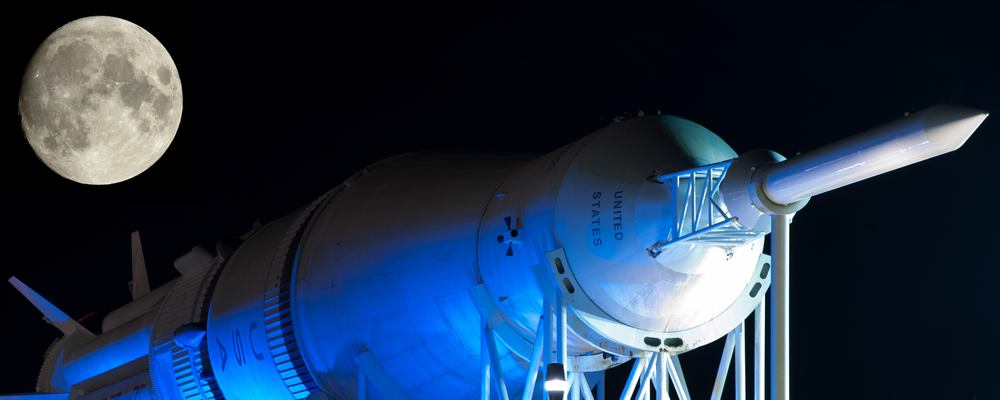What is a “moonshot”?
One of the greatest achievements of science (if not the greatest) in recent years, has been the development of COVID-19 vaccine in an absolutely unprecedentedly short time. It is said to have been a long overdue "moonshot" in science, a theoretically impossible achievement.
The term was first used in 1949 when Americans were considering conquest of space. It happened so that these were also times of huge advances in the field of vaccinology and development of a DTP vaccine against diphtheria, tetanus and pertussis. A few years later, in 1955, a vaccine against Heine-Medina disease was in use. Moonshot entered English language dictionaries for good in the 1960s when President Kennedy announced that man would fly to the Moon and return safely to Earth. Kennedy said that his choice had fallen on the Moon not because it was an easy goal, but on the contrary, because it was difficult. “It will allow us to focus and estimate our best forces and abilities. We're ready to take on that challenge, we don't want to postpone it. We intend to face it[...]
(Albert Bourla, "Moonshot: Inside Pfizer's Nine-Month Race to Make the Impossible Possible", p. 22)
How to “fly to the Moon”?
In order to achieve a mythical "moonshot" that will affect all the mankind, it is necessary to involve resources counted in billions of dollars, which only the largest states had in the Kennedy era. Today also global corporations have them.
Of course, even the biggest amount of money will not help without the minds of scientists who know how to use such means effectively to achieve the goal. And just as thousands of scientific centres in the world can boast about great personnel, only few have the right funds to get their scientists' ideas from the level of basic research to a final solution that will directly affect our lives. It can be clearly illustrated by the example of biophysics.

26/400 000
Work on nanoparticles is one of the very promising branches of activity in this field. Interesting results are obtained by studying dendrimers. These are laboratory-synthesised molecules with a branched symmetrical and three-dimensional structure. Dendrimers are of particular interest to scientists because their structure allows for precise control of size, shape and chemical properties, which makes them very useful in various fields. Dendrimers are currently being intensively studied by scientists all over the world, as their properties may have numerous applications in the future.
At the University of Lodz, the study of dendrimers is handled by scientists from the Department of General Biophysics at the Faculty of Biology and Environmental Protection that Professor Maria Bryszewska has headed for 24 years.
When asked about the dendrimers’ chance to play a groundbreaking role in science, she replied that the ease of chemical modification of dendrimer molecule creates opportunities for making a breakthrough in medicine. Despite this, although they have been studied since the late 1970s, so far only 26 clinical trials involving dendrimers have been conducted for more than 400 thousand synthesised compounds of this type!
(ClinicalTrials.gov, USA)

As Prof. Bryszewska says:
These are mostly clinical phase one trials. So far, the only dendrimer in phase three of the studies is the poly-L-lysine dendrimer, which was used as an active agent in the VivaGel proprietary drug (Starpharma, Australia) for the treatment of vaginal bacterial infections in sexually transmitted diseases, after its antibacterial properties were found. Currently, VivaGel is available in many countries under various names as a gel against vaginal bacterial infections and as a condom lubricant, as it has been found to have antiviral effects against HIV, HPV (human papillomavirus) and HSV (herpes simplex virus) in laboratory conditions. During the SARS-COV-2 pandemic, a proprietary drug based on the same dendrimer was developed in the form of an intranasal spray against COVID-19 infections (VIRALEZETM).
No support, no money
As Professor Bryszewska explains further, the procedure for introducing a new drug to the market is a multi-stage process, lasting years:
In the case of dendrimers, promising preliminary test results are already here, but they mainly concern in vitro (“in a test tube”) studies. To get the drug, animal studies (in vivo) and, above all, clinical trials have to be carried out. It's a very difficult, laborious and lengthy process where scientists should be supported by the right services (and money). We all witnessed the struggle to produce a vaccine against COVID-19, which was successful in an extremely short time and was a result of the incredible effort and intellect of scholars and mobilisation of huge amount of money on an unprecedented scale.
Successful research on dendrimers at the University of Lodz
As part of one of the projects completed at the University of Lodz, the possibility of using dendrimers in the treatment of leukaemia was investigated. The results are very promising. A compound that causes death of leukemic cells while remaining non-toxic to healthy cells has been developed. As Prof. Bryszewska points out:
This effect could, in the future, be used to develop a dendrimer-based drug for the treatment of lymphocytic leukaemia. We have managed to patent the results, but we have not found a partner willing to commercialise them.
A patent has also been filed in the department for two dendrimers that combine with nucleic acids (siRNA), allowing the transport of such complex into the cells in order to silence the corresponding gene, which translates into medicinal properties of such a compound.
Research results implementation is unlikely to happen
Studies conducted at the Department of General Biophysics of the University of Lodz are basic studies. Although they have already brought about a lot of interesting results, Prof. Bryszewska assesses their implementation as unrealistic. This is primarily related to the low interest of pharmaceutical companies, which prefer to take on less complex challenges, and to the need to involve large teams of people and considerable financial expenditures.
Reliable conduct of scientific research alone is not enough for us to enjoy new medicines that save human lives. To implement a groundbreaking scientific discovery, a broad and efficient system is needed that will support such a discovery on many levels, from university administration, through university-business collaboration, to systemic solutions prepared at ministerial level.

COVID-19 vaccine – organisational moonshot
While this may be surprising, it turns out that organisational solutions are crucial in the process of developing and implementing new drugs. Without them, there would be no success for Pfizer. As we read in the introduction to the book “Moonshot: Inside Pfizer's Nine-Month Race to Make the Impossible Possible” it was the reform of the entire corporation from scratch and the use of huge financial resources on research and development that allowed this company to operate so smoothly in 2020, when the COVID-19 vaccine was being developed. The whole process began two and a half years earlier, when Dr Albert Bourla was the executive director of the company. From the first days of work, he took up the restructuring of the company, which resulted in a completely new organisational culture, at the heart of which there were four slogans: Courage, Excellence, Equity, and Joy. (Albert Bourla, "Moonshot: Inside Pfizer's Nine-Month Race to Make the Impossible Possible", p. 22)
May our scientists, but above decision-makers of all levels (future of inventions that could potentially change our lives for the better often depend on their brave decisions), work in compliance with the above principles – the principles which in many points coincide with the values that people who are a part of the community of the University of Lodz (Mission and Vision of the University of Lodz) should be guided with.
And of course, most importantly, may Polish science have these billions of dollars at its disposal, without which, what is described above will not be possible...
Edit: Michał Gruda (Communications and PR Centre)
